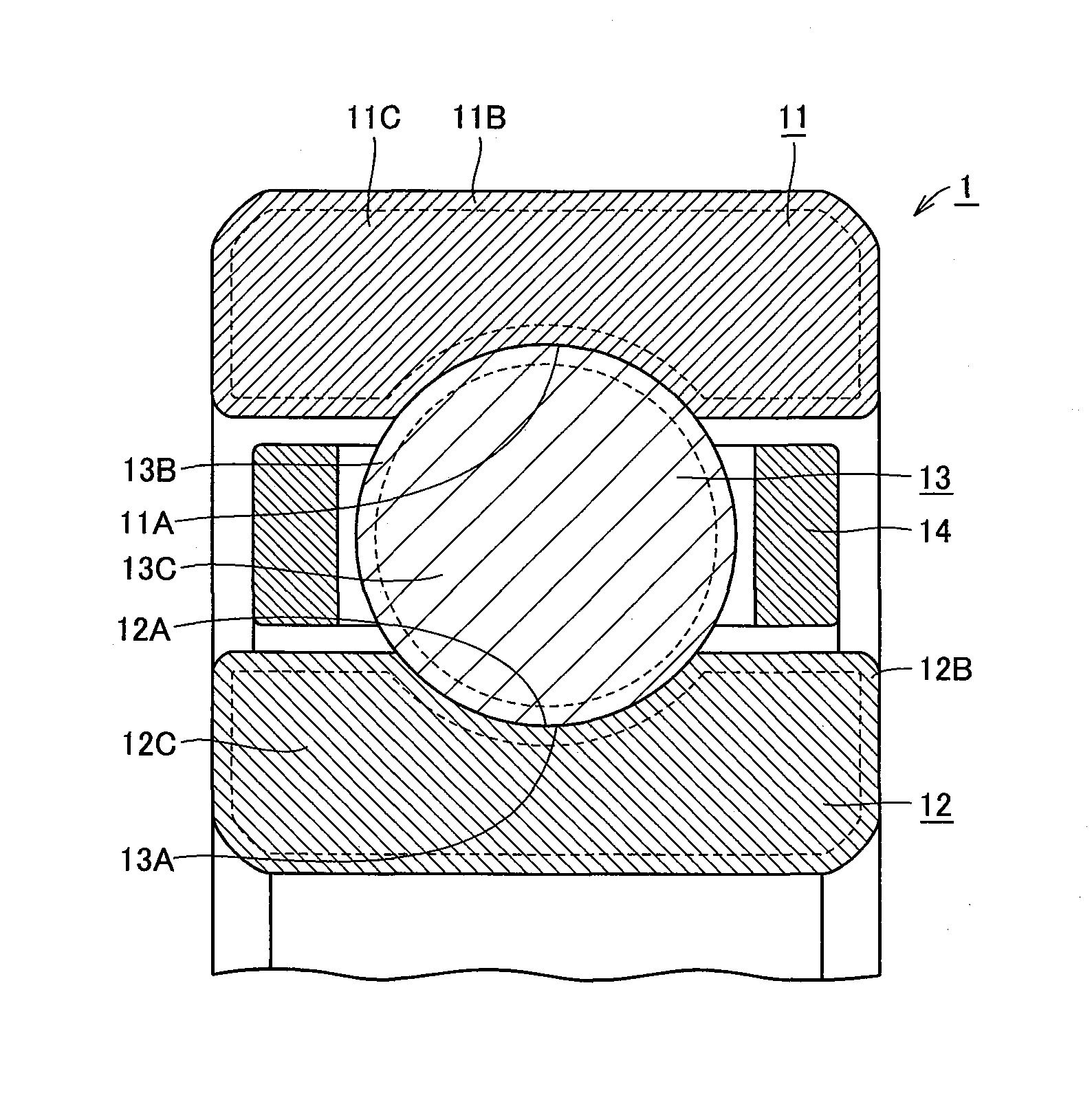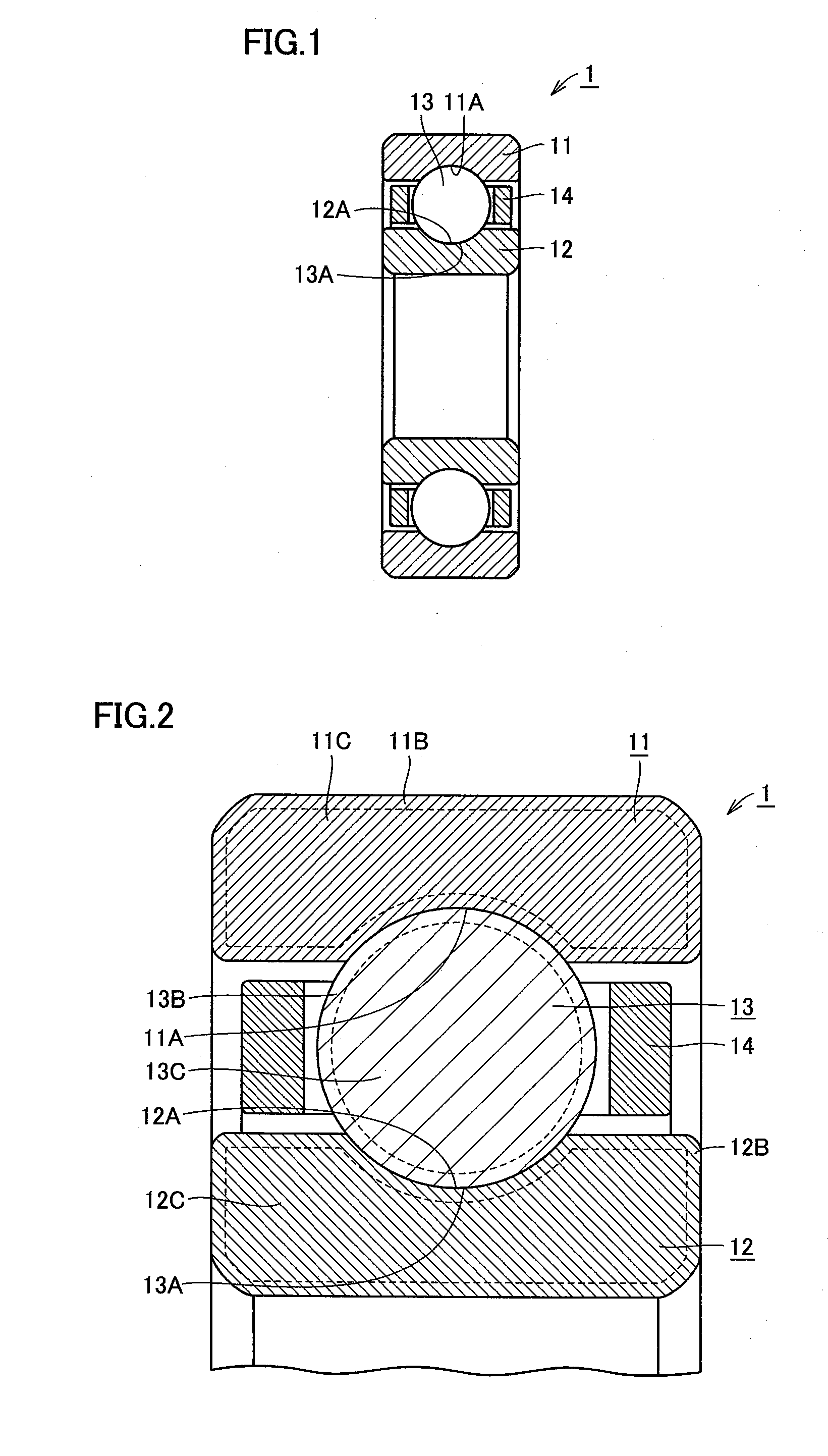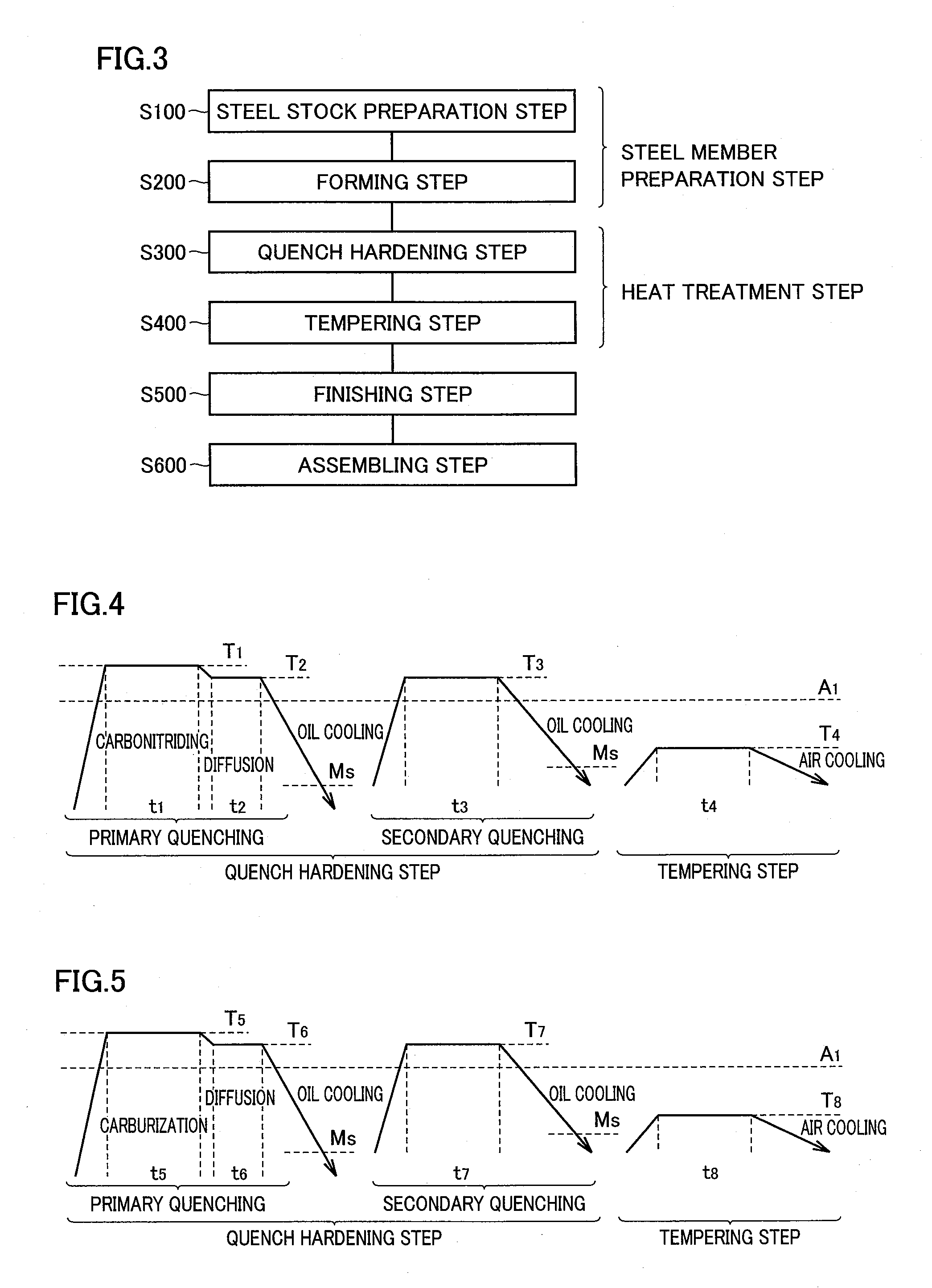Rolling member, rolling bearing and process for manufacturing rolling member
a technology of rolling bearings and rolling parts, which is applied in the direction of gearing, heat treatment equipment, furnaces, etc., can solve the problems of insufficient lubrication, reduced viscosity of lubricating oil, and deterioration of lubricating oil for the bearing, so as to reduce workability and increase the manufacturing cost of steel.
- Summary
- Abstract
- Description
- Claims
- Application Information
AI Technical Summary
Benefits of technology
Problems solved by technology
Method used
Image
Examples
first embodiment
[0119]First, the structures of a deep-groove ball bearing as a rolling bearing and bearing races and balls as rolling members according to a first embodiment of the present invention are described with reference to FIGS. 1 and 2.
[0120]Referring to FIG. 1, a deep-groove ball bearing 1 according to the first embodiment includes an annular outer race 11, an annular inner race 12 arranged inside outer race 11 and a plurality of balls 13 as rolling elements arranged between outer race 11 and inner race 12 and held in an annular cage 14. An outer race rolling surface 11A is formed on the inner peripheral surface of outer race 11, while an inner race rolling surface 12A is formed on the outer peripheral surface of inner race 12. Outer race 11 and inner race 12 are so arranged that inner race rolling surface 12A and outer race rolling surface 11A are opposed to each other. Plurality of balls 13 are in contact with inner race rolling surface 12A and outer race rolling surface 11A and arrange...
second embodiment
[0150]Rolling members and a rolling bearing according to a second embodiment are now described.
[0151]Referring to FIG. 6, a self-aligning roller bearing 2 basically has a structure similar to that of deep-groove ball bearing 1 described with reference to FIGS. 1 and 2. In shapes of bearing races and rolling elements, however, self-aligning roller bearing 2 according to the second embodiment is different from deep-groove ball bearing 1 according to the first embodiment.
[0152]In self-aligning roller bearing 2, the inner peripheral surface of an outer race 21 is in the form of a spherical surface whose center aligns with the bearing center, two rows of raceway grooves are formed on the outer peripheral surface of an inner race 22, and two rows of barrel-shaped rollers 23 held by a cage 24 are provided between outer race 21 and inner race 22. Alignability against inclination of a shaft or the like is obtained due to the two rows of barrel-shaped rollers 23. In rollers 23, the overall ou...
third embodiment
[0156]Rolling members and a rolling bearing according to a third embodiment are now described.
[0157]Referring to FIG. 7, a quadruple conical roller bearing 3 basically has a structure similar to that of deep-groove ball bearing 1 described with reference to FIGS. 1 and 2. In shapes of bearing races and rolling elements, however, quadruple conical roller bearing 3 according to the third embodiment is different from deep-groove ball bearing 1 according to the first embodiment.
[0158]In other words, quadruple conical roller bearing 3 includes four annular outer races 31, two annular inner races 32 arranged inside outer races 31, and a plurality of conical rollers 33 arranged between outer races 31 and inner races 32. Four outer races 31 and two inner races 32 are so arranged that the outer peripheral surfaces of inner races 32 are opposed to the inner peripheral surfaces of two outer races 31 respectively. Further, plurality of rollers 33 are in contact with outer race rolling surfaces ...
PUM
| Property | Measurement | Unit |
|---|---|---|
| grain size | aaaaa | aaaaa |
| length | aaaaa | aaaaa |
| distance | aaaaa | aaaaa |
Abstract
Description
Claims
Application Information
 Login to View More
Login to View More - R&D
- Intellectual Property
- Life Sciences
- Materials
- Tech Scout
- Unparalleled Data Quality
- Higher Quality Content
- 60% Fewer Hallucinations
Browse by: Latest US Patents, China's latest patents, Technical Efficacy Thesaurus, Application Domain, Technology Topic, Popular Technical Reports.
© 2025 PatSnap. All rights reserved.Legal|Privacy policy|Modern Slavery Act Transparency Statement|Sitemap|About US| Contact US: help@patsnap.com



